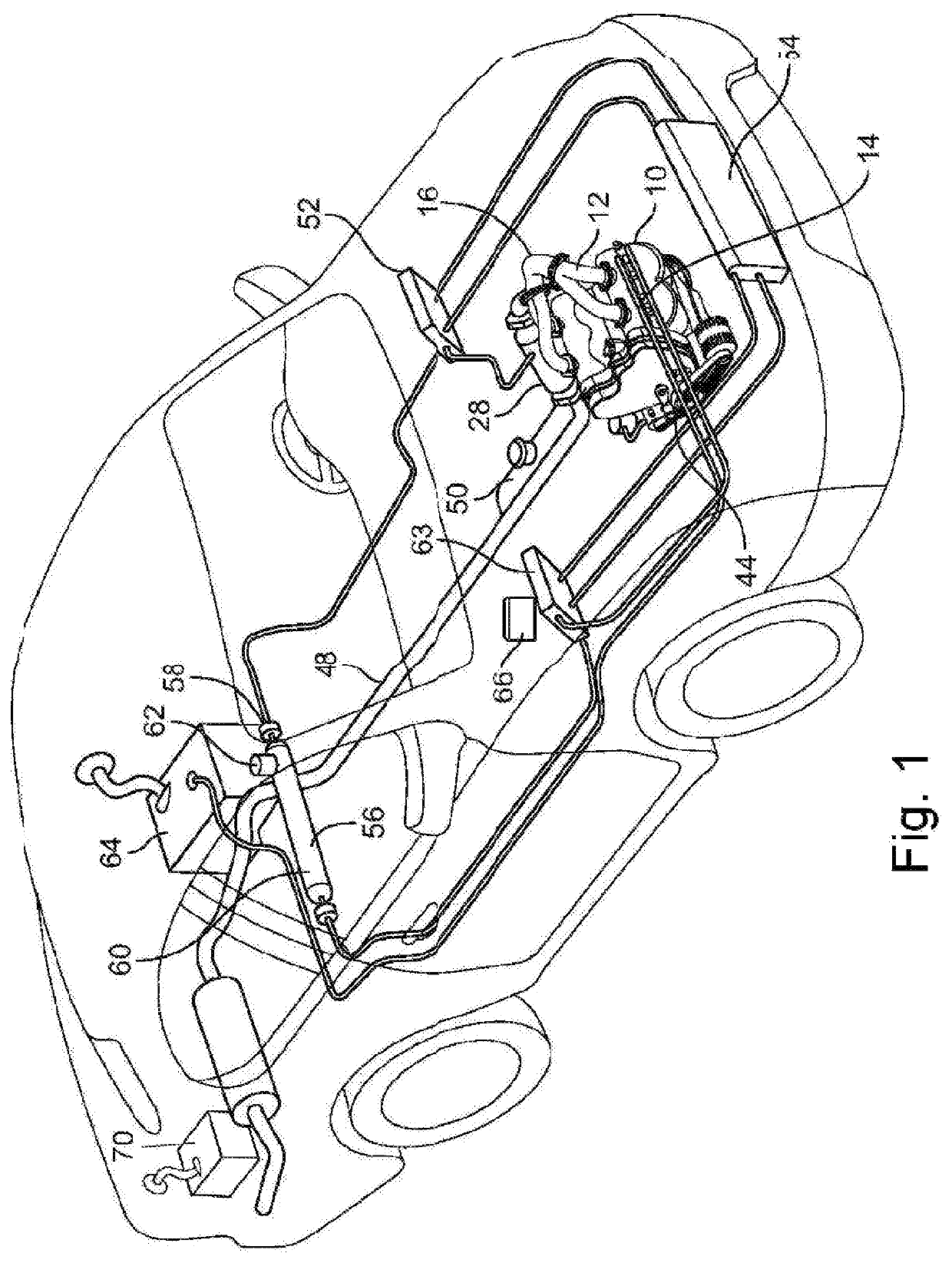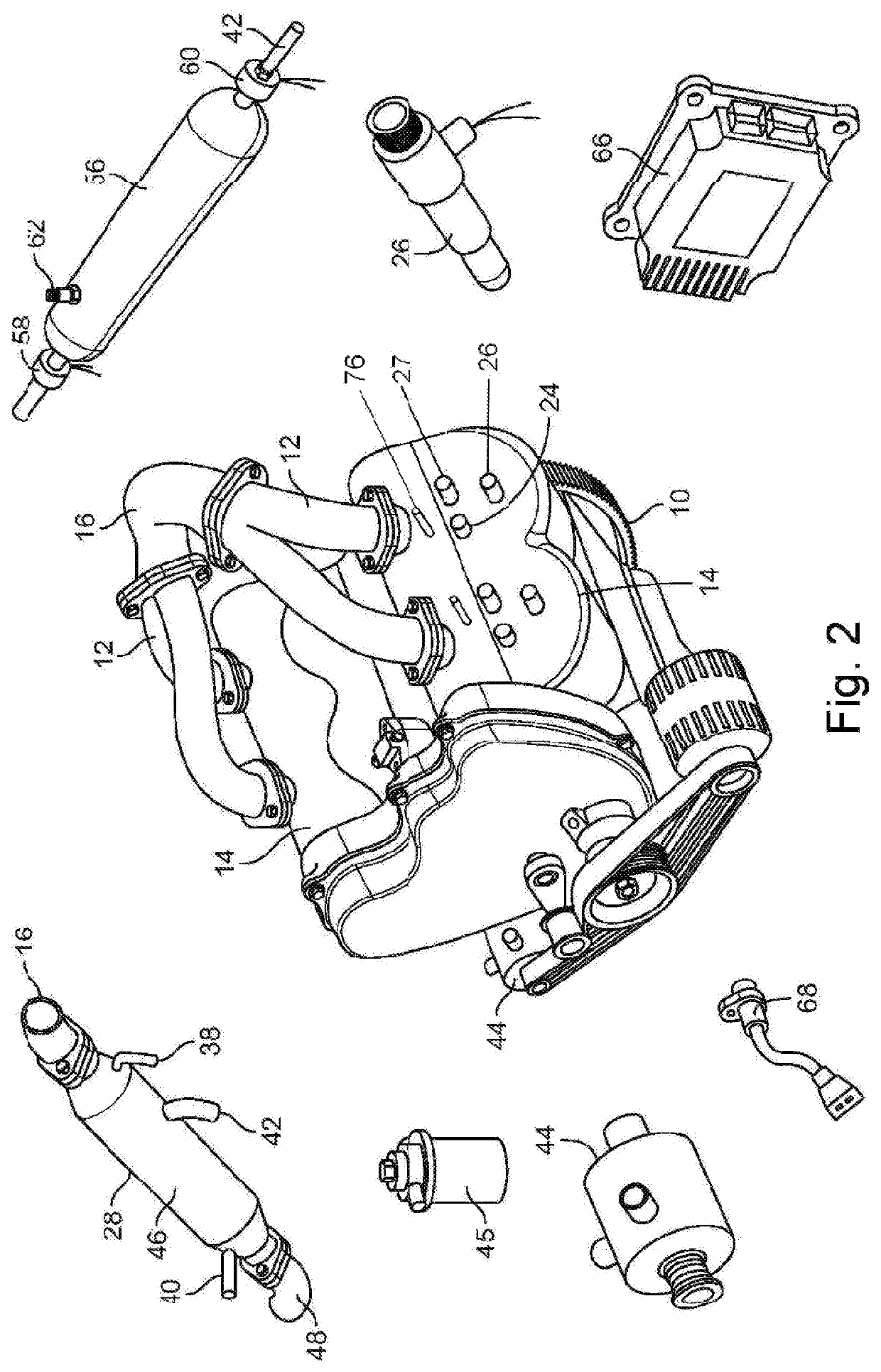Power system with internal combustion engine
- Summary
- Abstract
- Description
- Claims
- Application Information
AI Technical Summary
Benefits of technology
Problems solved by technology
Method used
Image
Examples
Embodiment Construction
[0017]Turning in detail to the system illustrations, a power system is illustrated with power provided by an internal combustion engine 10 employing a cycle completed in two strokes. The engine 10 is illustrated to be a 90° V4 with a conventional cylinder block, crankshaft, pistons, connecting rods and rotary power output equipment. This is one example of use and configuration. Stationary and vehicular engines as well as single cylinder and other multi-cylinder engines are contemplated. In the illustrated example, a conventional belt-drive off the crankshaft is arranged to drive a cooling water pump, an alternator and an air compressor. A conventional timing belt drives an exhaust port cam and a water pump. Exhaust manifolds 12 extend directly out of heads 14 to accumulate exhaust in a collector 16 defining a single exhaust outlet.
[0018]The arrangement of the heads 14 associated with the combustion chambers 18 is illustrated in FIGS. 3 and 4. Each variable volume combustion chamber ...
PUM
 Login to View More
Login to View More Abstract
Description
Claims
Application Information
 Login to View More
Login to View More - R&D
- Intellectual Property
- Life Sciences
- Materials
- Tech Scout
- Unparalleled Data Quality
- Higher Quality Content
- 60% Fewer Hallucinations
Browse by: Latest US Patents, China's latest patents, Technical Efficacy Thesaurus, Application Domain, Technology Topic, Popular Technical Reports.
© 2025 PatSnap. All rights reserved.Legal|Privacy policy|Modern Slavery Act Transparency Statement|Sitemap|About US| Contact US: help@patsnap.com



